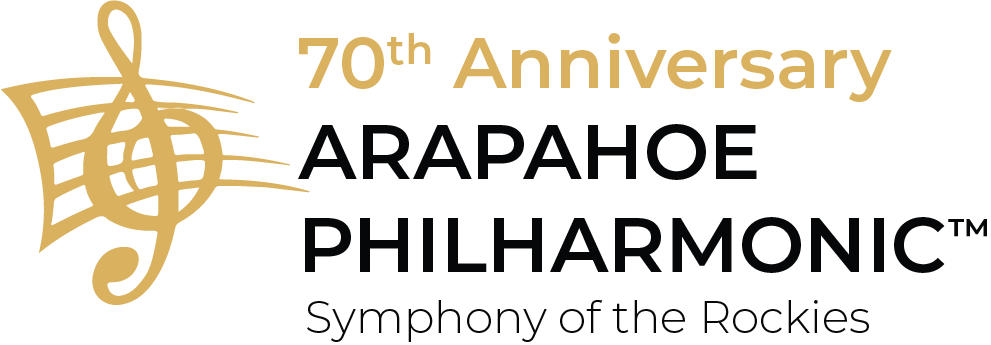
How to Read the Program
The booklet is often called simply “the program” for short, but the “program” can also mean the repertoire, or list of works being performed at a specific concert. For clarity, here we will call the printed document you receive at the door the “program booklet”. When we say, “the program”, we will be referring to the repertoire for the concert. Of course, nowadays, you may also receive your program booklet electronically!
Program Page
One of the most important parts of the program booklet is the program page. This page will list all of the compositions, the composers, and perhaps a bit of additional information about the piece. Since classical music comes from all over the world, you may often see words in other languages as part of the program. Not only that, but the English may not always look familiar if it comes from earlier times before standardization of spelling was put into place.
There are some different types of names of compositions that might appear on the program page. You might have the name of a piece given to it by the composer, such as The Peer Gynt Suite (Edvard Grieg) or Bolero (Maurice Ravel). Another type of naming for compositions is based on the type of piece it is, such as Symphony No. 5 or Concerto for Violin and Orchestra. With these names, you won’t know specifically which piece is being played without knowing the composer’s name as well, as many composers may have created works with these names. Thirdly, a composer may name a piece, or especially a segment of a piece, based on its tempo.
Examples here include Adagio for Strings (Samuel Barber) or Allegro from The Four Seasons, “Spring” (Antonio Vivaldi). Adagio is a slow tempo and allegro is a fast or moderately fast tempo. Another way the compositions may be shown is by their popular nicknames. Examples here include the “Choral” Symphony, Symphony #9 (Ludwig van Beethoven) and the “Surprise” Symphony (Franz Josef Hayden). Compositions may also include a number of other terms in their titles, such as:
The key in which the work is written, such as A Major or G Minor. The letters A – G refer to the 8 primary keys in classical music, correlated to the white keys on a piano keyboard. If there is a “flat” () or a “sharp” (#) next to the letter, that denotes a half step below or above the main note, correlated to the black keys on a piano keyboard.
There may also be the words “Major” or “Minor” next to the alphabet letter. Music written in major keys is more bright and positive sounding, whereas music written in minor keys sounds more sad or melancholic.
Then there are abbreviations like Op. 95, K 467, BWV 1068, L 75/3, HWV 56, and WoO 59. What is this strange short-hand? Let’s start with Op. “Op.” is short for “Opus”, meaning “work”, and it numbers the composer’s works in chronological order. Op. 95 is the composer’s 95th composition.
Another number may be added to the Opus number if there have been companion pieces created together. An example of this is Beethoven’s “Moonlight Sonata” (Piano Sonata No. 14 in C-sharp minor), which is Opus 27, No. 2, a companion piece to Opus 27, No. 1 (Piano Sonata No. 13 in E-flat major).
During their lifetimes, however, composers weren’t always consistent about assigning Opus numbers, so subsequent musicologists have assigned other numbering systems to some composers’ works. All you really need to know when reading the program page is that these letters and numbers are a way of keeping track of all of the compositions of a particular composer. But if your curiosity extends a little further, here is some de-coding of systems that might appear on our programs:
A number with a “K” in front of it, e.g. K 467, is by Wolfgang Amadeus Mozart, and the pieces are all numbered chronologically, so this would be Mozart’s 467th composition. It is his Piano Concerto No. 21 in C major.
The BWV numbering system applies to works of Johann Sebastian Bach, so BWV 1068 was Bach’s 1068th?composition!
HWV applies to works by George Frederic Handel. HWV 56 is Messiah, a famous oratorio in the catalog of Handel’s works.
WoO (Without Opus) numbers apply to Beethoven’s extensive body of work. WoO 59 is Beethoven’s “Für Elise”, one of his most popular compositions.
L 75/3 is Clair de lune, for piano (Suite Bergamasque No. 3), by Claude Debussy.
Visit the Concert Glossary page for a translation of the Italian terms often used to indicate the speed of the music for each movement.
Personnel Page
This page will list all the members of the orchestra. Sometimes there will be additions such as extra players when a composition calls for more than normal of a certain type of instrument. Take for example, Stravinsky’s Rite of Spring that calls for eight French horns! Generally, the strings will be listed alphabetically in each section, and the other players will be listed by where they sit in their section (oboes, trumpets, etc.)?
Featured Performers
Usually there will be a biographical sketch about any featured soloists or guest artists. It will usually list their musical credentials, major works they have played, orchestras with whom they have performed, awards they have received, etc.
Program Notes
The Arapahoe Philharmonic program notes are written by Charley Samson, retired KVOD radio host. Charley, in his informative and occasionally droll way, will tell you about the compositions being presented, provide information about the composer and what was going on in his life at the time he created the piece, and perhaps give you entertaining and amusing tidbits about the work’s reception by audiences throughout history.
Sample Program Demystified
Here is a sample program of works performed in the past by the Arapahoe Philharmonic, along with a guide to the program listings:
An overture is an introductory piece written for a large choral, operatic, or orchestral work. Overtures are often played as part of a concert repertoire without performing the bulk of the original work. In fact, the overture is sometimes the only part of a composition that is still commonly played. You can see that it doesn’t have any separate movements (parts) listed under the name, so it will generally be a fairly quick introductory piece to get both the audience and the orchestra warmed up. This overture was the 92nd piece written by the composer and was named Carnival Overture by the composer.
This piano concerto is the 103rd piece written by the composer and has been popularly named the “Egyptian” concerto. It is the 5th piano concert of the composer. The key is F major. You will likely see a grand piano in a prominent position on the stage before the concerto begins.
The soloist playing the piano in the concerto is Jamie Shaak.
There are three movements or sections in the piano concerto. Their names are based on the speed of each section. Check out our Concert Glossary page for definitions.
The Intermission generally happens around the middle of the program. It gives you a chance to stretch your legs, use the facilities in the lobby, get a beverage refill, and perhaps speak with some of the orchestra’s musicians. There will be a bell or flickering lights in the lobby to let you know to return to your seat for the remainder of the concert. Once in a while, there will not be an intermission because of the nature of the programming, so check your program before the beginning of the concert to confirm whether there will be a break.
This is Brahms’ second symphony, but his 73rd composition. It is written in D major, and has four movements named for their tempo or speed. The second movement is the only slow movement; the other three are all somewhat fast though each is slightly different.
Other Program Contents
You will find information about what is going on with the orchestra, a list of Board members, staff, requests for donations or participation in events, and advertisements from our wonderful sponsors.
We will recognize donors, both corporate and individual, as well as the Scientific and Cultural Facilities District, which is a major contributor to our financial success through you, the taxpayers in our region.
We are pleased that you have taken the opportunity to learn more about us, and about classical music, through our program.

